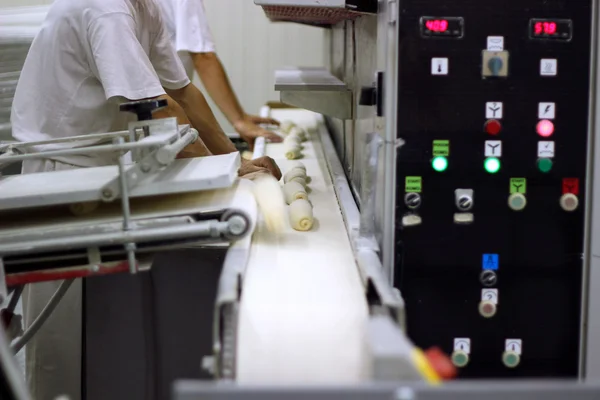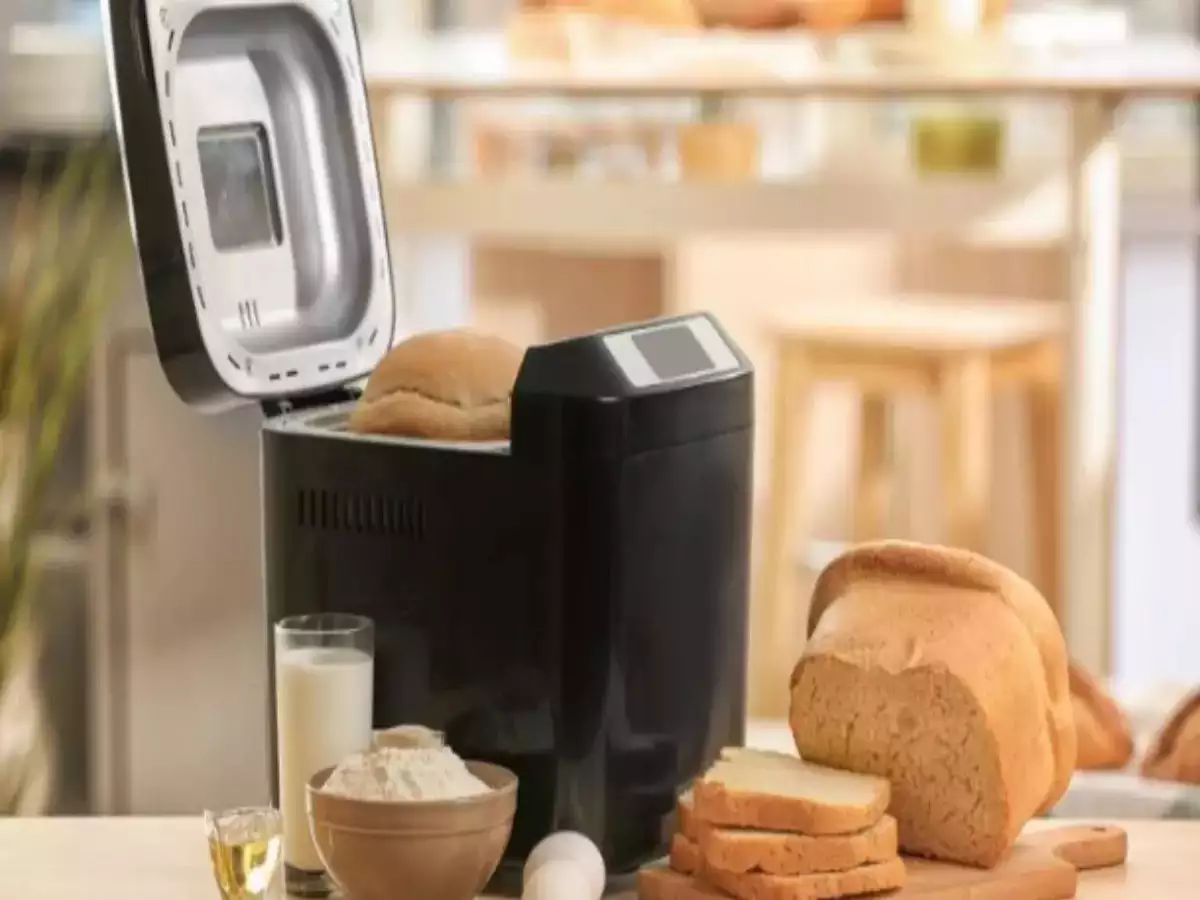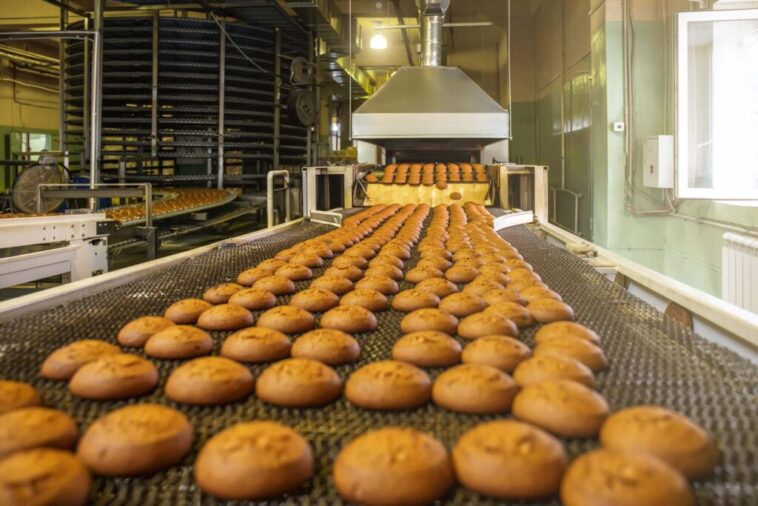Bread factory equipment plays an important role in the production of a variety of different types of bread. From slicing machines to dough dividers, each type of bread factory equipment is essential to the production of various shapes, sizes, and types of bread. In this blog post, we’ll explore the different types of bread factory equipment, so you can get a better understanding of what each piece of machinery does and how it contributes to the process of making delicious loaves of bread.
Mixing machines
Mixing machines are a crucial part of any bread-making operation. They take the individual ingredients and mix them together, creating a homogeneous dough that is ready to be further processed into various shapes and sizes. Depending on the type of bread being produced, these mixing machines can come in many forms, from large industrial stand mixers to smaller tabletop units.
The most commonly used types of mixing machines for bread production are planetary mixers and spiral mixers.
Dough sheeters

Dough sheeters are an essential piece of equipment in a bread factory as they are used to roll out large quantities of dough into thin, consistent sheets. Dough sheeters are designed to roll out dough to a consistent thickness, which is important for ensuring that each loaf of bread is the same size and shape. This is especially important for bread factories that produce large volumes of bread.
They are used to create uniform dough pieces that can be easily molded and shaped into loaves or other products. Dough sheeters work by pressing the dough through two rollers, which flatten it out evenly. This helps to ensure that the dough has a consistent texture and thickness, allowing for uniform baking and shape retention. Dough sheeters are also useful for producing specialty bread, such as baguettes and focaccia. The rollers can be adjusted to different widths, allowing for different shapes and textures.
Molders
Molders are an important piece of equipment in a bread factory as they are used to shape and mold the dough into the desired shape for a particular type of bread. Molders help to automate the process of shaping bread dough, which can save a significant amount of time and labor compared to shaping bread by hand. This is especially important in large-scale bread production facilities, where speed and efficiency are critical to meeting demand.
They take a pre-mixed dough block and press it into various molds. The machine then extrudes the dough into these molds, before delivering the shaped pieces to another machine or a conveyor belt for further processing. There are two main types of molders used in bread factories – mechanical and hydraulic.
Mechanical molders rely on a series of rollers to press and shape the dough. These machines are usually more compact, but they have less control over the thickness and shape of the finished product. Hydraulic molders use a motor to press the dough and provide more precise control over the shape and thickness of the final product.
Slicers
Slicers are a necessary component of any bread production line. They slice the finished loaves into predetermined sizes. Depending on the size and shape of the loaf, slicers may use blade, band, or roller systems. Blade systems utilize a rotating blade to cut dough into slices. Band systems employ a rubber belt with a cutting wire to cut dough into slices. Finally, roller systems utilize two interlocking, rotating rollers to achieve the desired slicing thickness.
Slicers are equipped with adjustable blades that can be adjusted to achieve different slicing thicknesses.
Baking ovens

Baking ovens are essential pieces of bread factory equipment that bake the dough into the desired shape and texture. They come in a variety of sizes and styles and can range from large industrial ovens to small countertop models. Gas-fired ovens are a popular choice for larger bakeries, as they offer fast heating, consistent temperatures, and excellent results. Electric ovens are great for smaller operations because they require minimal maintenance and can be easily adjusted to the desired temperature. Convection ovens are also gaining popularity in bread factories due to their ability to evenly bake products without having to rotate pans.
Cooling racks
Cooling racks are an important part of the bread factory equipment. They are used to cool the freshly baked loaves before packing. There are several types of cooling racks available for use in the bread factory, including wire racks, perforated racks, and rotating racks.
Wire racks are the most common type of cooling racks used in the bread factory. The wire racks are made of strong, sturdy wire that is welded together to create a platform on which the loaves can be placed. These wire racks are durable and easy to clean, making them ideal for use in the bakery.
Perforated racks are similar to wire racks, but they have small holes or perforations on their surface. These perforations allow air to circulate around the loaf and help cool it faster. Rotating racks are also available, which allow the loaves to be moved around during cooling so that air can reach all sides of the loaf evenly.
Cooling racks are essential for the bread factory because they prevent loaves from becoming soggy or sticking to surfaces as they cool. They are also useful for preventing loaves from drying out too quickly, thus preserving the freshness of the bread.

Conclusion
In conclusion, there is a wide variety of bread factory equipment available to help manufacturers produce high-quality products in an efficient manner. Mixing machines are used to combine ingredients into dough, while dough sheeters form the dough into sheets. Molders then shape the dough into its desired form, and slicers help divide the dough into smaller portions. The baking ovens are what gives the bread its final form, and cooling racks help ensure that the product has the proper temperature for packaging and distribution. All of these pieces of equipment work together to ensure that bread factories can operate at maximum efficiency and deliver a top-notch product.




